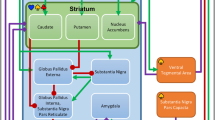Abstract
Chronic tic disorders (CTDs), including Tourette Syndrome, affect approximately 1 in 100 individuals, and pediatric onset is the norm. Pharmacotherapy has traditionally been the first line of treatment for CTD. However, given that partial response to pharmacotherapy is typical and that the side effect profile for efficacious medications warrants consideration before initiating treatment, there is a clear need to develop and disseminate psychosocial treatments to enhance outcomes among individuals with CTDs. The current report describes findings from a pilot project designed to: (a) train two sites in behavior therapy involving Habit Reversal Training (HRT) for CTDs; (b) pilot test the HRT protocol in adolescents and young adults with CTDs; (c) develop and refine a combined Habit Reversal Training plus Acceptance and Commitment Therapy (HRT+ACT) protocol for CTDs; and (d) pilot test the combined protocol in adolescents and young adults with CTDs. Results indicated that, on average, both the HRT alone and the HRT+ACT groups experienced substantial, clinically relevant, durable, and comparable reductions in tic symptoms through the 1 month follow-up, as well as improvements in participant and parent-rated global functioning over this same period.



Similar content being viewed by others
References
Albano, A. M., & Silverman, W. K. (1996). The anxiety disorders interview schedule for DSMIV, child version: Clinician manual. New York: Oxford University Press.
American Psychiatric Association. (2000). Diagnostic and statistical manual of mental disorders (4th ed. Text Revision). Washington: Author.
Azrin, N. H., & Nunn, R. G. (1973). Habit reversal: a method of eliminating nervous habits and tics. Behavior Research and Therapy, 11, 619–628.
Chang, S. W., Piacentini, J., & Walkup, J. T. (2007). Behavioral treatment of Tourette syndrome: past, present, and future. Clinical Psychology: Science and Practice, 14, 268–273.
Cook, C. R., & Blacher, J. (2007). Evidence-based psychosocial treatments for tic disorders. Clinical Psychology: Science and Practice, 14, 252–267.
Franklin, M. E., & Himle, M. B. (2007). “Evidence-based psychosocial treatments for tic disorders”: theoretical and treatment implications. Clinical Psychology: Science and Practice, 14, 274–278.
Gaze, C., Kepley, H. O., & Walkup, J. T. (2006). Co-occurring psychiatric disorders in children and adolescents with Tourette syndrome. Journal of Child Neurology. Special Issue: Tourette Syndrome, 21, 657–664.
Guy, W. (1976). ECDEU assessment manual for psychopharmacology (2 DHEW Publication No. (ABM) 76–388 ed.). Washington, DC: U.S. Government Printing Office.
Harrison, J. N., Schneider, B., & Walkup, J. T. (2007). Medical management of Tourette Syndrome and co-occurring conditions. In D. W. Woods, J. C. Piacentini, & J. T. Walkup (Eds.), Treating Tourette Syndrome and tic disorders: A guide for practitioners (pp. 113–153). New York: Guilford.
Hayes, S. C. (Ed.). (1987). A contextual approach to therapeutic change. New York: Guilford.
Hayes, S. C., & Wilson, K. G. (1994). Acceptance and commitment therapy: altering the verbal support for experiential avoidance. Behavior Analyst, 17, 289–303.
Hayes, S. C., Strosahl, K. D., & Wilson, K. G. (1999). Acceptance and commitment therapy: An experiential approach to behavior change. New York: Guilford.
Himle, M. B., Chang, S., Woods, D. W., Bunaciu, L., Pearlman, A., Buzzella, B., et al. (2007). Evaluating the contributions of ADHD, OCD, and tic symptoms in predicting functional competence in children with tic disorders. Journal of Developmental and Physical Disabilities, 19, 503–512.
Leckman, J. F., Riddle, M. A., Hardin, M. T., Ort, S. I., Swartz, K. L., Stevenson, J., et al. (1989). The Yale Global Tic Severity Scale: initial testing of a clinician-rated scale of tic severity. Journal of the American Academy of Child and Adolescent Psychiatry, 28, 566–573.
Leckman, J. F., Walker, D. E., & Cohen, D. J. (1993). Premonitory urges in Tourette’s syndrome. The American Journal of Psychiatry, 150, 98–102.
Marcks, B. A., Woods, D. W., Teng, E. J., & Twohig, M. P. (2004). What do those who know, know? Investigating providers’ knowledge about Tourette syndrome and its treatment. Cognitive and Behavioral Practice, 11, 298–305.
Mink, J. W. (2001). Neurobiology of basal ganglia circuits in Tourette syndrome: faulty inhibition of unwanted motor patterns? Advances in Neurology, 85, 113–122.
Mundt, J. C., Marks, I. M., Shear, M., & Greist, J. M. (2002). The Work and Social Adjustment Scale: a simple measure of impairment in functioning. The British Journal of Psychiatry, 180, 461–464.
Piacentini, J., Woods, D., Scahill, L., Wilhelm, S., Peterson, A. L., Chang, S., et al. (2010). Behavior therapy for children with Tourette disorder: a randomized controlled trial. Journal of the American Medical Association, 303, 1929–1937.
Powers, M. B., Vording, M. B., & Emmelkamp, P. M. G. (2009). Acceptance and commitment therapy: a meta-analytic review. Psychotherapy and Psychosomatics, 78, 73–80.
Roemer, L., & Orsillo, S. M. (2007). An acceptance-based behavior therapy for GAD. Unpublished manual.
Twohig, M. P., Hayes, S. C., & Masuda, A. (2006). A preliminary investigation of acceptance and commitment therapy as a treatment for chronic skin picking. Behaviour Research and Therapy, 44, 1513–1522.
Woods, D. W. (2001). Habit reversal treatment manual for tic disorders. In D. W. Woods & R. G. Miltenberger (Eds.), Tic disorders, trichotillomania, and other repetitive behavior disorders: Behavioral approaches to analysis and treatment (pp. 97–132). Boston: Kluwer.
Woods, D. W., & Miltenberger, R. G. (1995). Habit reversal: a review of applications and variations. Journal of Behavior Therapy and Experimental Psychiatry, 26, 123–131.
Woods, D. W., Himle, M. B., & Osmon, D. C. (2005). Use of the impact on family scale in children with tic disorders: descriptive data, validity, and tic severity impact. Child & Family Behavior Therapy, 27, 11–21.
Woods, D. W., Wetterneck, C. T., & Flessner, C. A. (2006). A controlled evaluation of acceptance and commitment therapy plus habit reversal for trichotillomania. Behaviour Research and Therapy, 44, 639–656.
Author information
Authors and Affiliations
Corresponding author
Rights and permissions
About this article
Cite this article
Franklin, M.E., Best, S.H., Wilson, M.A. et al. Habit Reversal Training and Acceptance and Commitment Therapy for Tourette Syndrome: A Pilot Project. J Dev Phys Disabil 23, 49–60 (2011). https://doi.org/10.1007/s10882-010-9221-1
Published:
Issue Date:
DOI: https://doi.org/10.1007/s10882-010-9221-1




